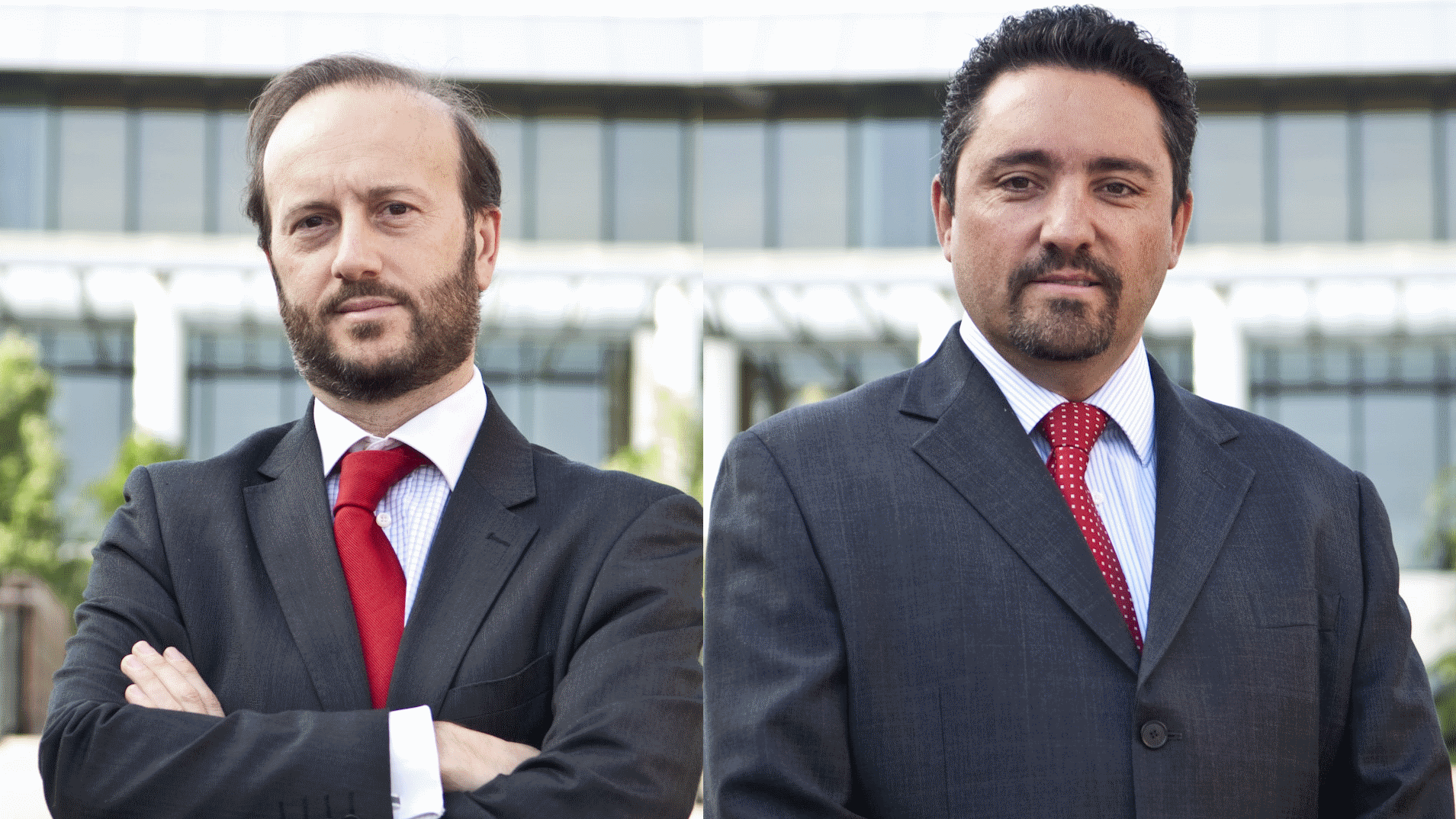Latin America Calling
Santander Asset Management has just moved its headquarters from Madrid to London. We sit down with two of its top LatAm fund managers to ask them where they’re putting their money at the moment…

One of the biggest investment themes at the moment is falling oil; how will lower prices affect Latin America?
JC: To answer that you need to take one step back and make some sort of forecast. That’s never easy with oil but ask yourself: are we likely to see oil at $40 for the next five years or will we have some sort of a rebound? If you look at the fundamentals they point to oil at around $65 as that’s the price at which marginal supply equates to marginal demand. So it should revert to that unless there are big changes in the industry.
But that’s not going to happen in the short-term because there are many incentives for high-cost producers to carry on for longer than you would think. For example some are hedged for most of 2015 so they’re not really feeling the pain yet. But after that it should gyrate back.
"If oil bounces back to $65 by 2016 then Mexico is OK…"
If we look at Mexico it is hedged for 2015, so it’s fine for this year. If oil bounces back to $65 by 2016 then Mexico is OK. The big driver in Mexico is the energy reform and most of that will get done at $65 – so in that scenario it won’t be a big hit for Mexican economy. Colombia on the other hand is affected more directly and it also has a greater fiscal impact from low oil. In Colombia you see many projects just being shut down and capex will come back quite a bit,
AM: If you look at the whole of Latin America you see Venezuela, Colombia and Mexico are really the only ones hit. That said there is a wider array of possible consequences. For example, in Argentina you’d expect that low oil prices would hurt the Vaca Muerta shale development, which would reduce future FDI inflows and international reserves replenishment. So there is a wide array of implications, but you must remember that there are also a lot of countries that are actually oil importers in Latin America.
Brazil has had a terrible few years; has it got to the point where it’s a buying opportunity for our readers?
AM: I think from the point of view of local rates, there is an opportunity but looking at the currency itself we don’t think it’s a great opportunity at present levels. In fact we forecast some depreciation by the end of the year so we don’t think it has a lot of potential. On the rates, especially short rates, that are discounting stronger path of hiking there is an opportunity.

JC: The main problem with Brazil is the lack of productivity and it’s an issue that goes back a few years. The strength of the real two or three years ago was part of problem, so the weaker currency is part of a solution. Of course a weaker currency will bring its own problems in the form inflation, which is why the government is trying to slow down consumption. But for investors looking at the real you can’t realistically say that Brazil will come out of this with stronger currency as it needs a weaker currency.
Another factor here is the currency swaps that the Central Bank has been engaging in. At one point they’d swapped about 2/3rds of their reserves away, which is extremely dangerous. They now seem to be on a path to reduction, which if they take to zero, can only be a negative for currency.
So where are the opportunities for LatAm INVESTOR readers?
JC: Brazil has an external imbalance, it has a current account deficit, and policymakers will be looking to fix that. This means lower consumption, higher investment and higher domestic industrial production. So I think it’s fair to assume that over the next few years anything to do with consumption will be weaker, while stocks related to production or investment will be stronger. Take auto stocks, for example, they are inefficient because of problems that affect Brazilian industry. We are not investing in them just yet, we think we could still see layoffs and production costs, but eventually they should start to improve.
2016 can be the year when we finally see the economy pick up. I think equity market will focus on negatives over the next few months but then later, once we get past some issues and we get some good signs, then multiples will go up. Earnings growth won’t be there but multiples will go up.
AM: On the credit side we like the food industry. Brazil has a very strong food industry and there are many interesting players there. We have to go case by case, not everyone is in the same cycle. Cattle, poultry, each subsector has its own dynamic and we need to look at the leverage, credit quality and debt profile for each name but in general it’s one of the sectors that we prefer.
The other interesting area is the pulp and paper sector, which is a good exporter. Here we have already seen the capex cycle going down because new facilities have been incorporated into production, so free cashflow will increase, which is what we like. We think it could be a safe haven in this environment.
And what about Mexico? It encouraged so much optimism but the jury is still out on whether it will deliver.
JC: From an equity point of view Mexico has always been an interesting market because you can actually have a positive view and have a negative position. For example, right now we have a positive view on the Mexican economy and we think the potential GDP in Mexico is probably going to have the biggest delta in Latin America. We’re positive on industrial names that play to exports, manufacturing, and reforms. But we’re negative on the consumption side. That’s because the fiscal reform has added taxes and the oil price is going to hit government spending so the consumer will be subdued for a year or two.
So we’re positive on the general economy but because the equity market is consumer focused – supermarkets, telecoms etc make up 80% of listed stocks – we’re not positive the Mexican market.
AM: We weren’t that bullish when everyone else was getting excited about the big ‘Mexican Moment’. One reason was that we weren’t sure if reforms would come out as the market hoped. Actually we were wrong with that and we have to admit that the government surprised us in a positive way, not only the passage of the reforms but also the implementation of the legal framework that was put in place. But even then, after the reforms, we still weren’t bullish. We understood that tax reform would hit consumers and it would take a while for the benefits of higher investment to compensate for that because everyone was in ‘wait and see’ mode. We were right on that, which is why we saw GDP growth doing nothing in the first year of reform.

Now, however, we’re a bit more bullish. We think around 70% of what was expected to come in from oil reform will still come in. We are not seeing companies running scared because of the oil price. We expect stronger companies, majors that have been in the sector for a long time and have the financial muscle to finance themselves even in this oil price environment, to be active in seeking opportunities. Maybe some particular niches, such as shale, may not be as appealing as it would have been a year ago but we still expect sizeable investments to come in.
Many Latin American firms took advantage of low bond yields to raise record amounts dollar-denominated debt; is this a worry for investors?
I think that there is a big flaw in the logic of the theory that having a larger corporate dollar-denominated issuance will lead to a lot more leverage. The first flaw is that a lot of these bonds come from a substitution from loan debt to corporate debt. Secondly, you have deeper swap markets, so many of the companies that issued in dollars were actually arbitraging and taking advantage of the low rates and then swapping back into local currencies to match their local currency revenues. That second factor is interesting because 10 to 15 years ago that was not the case as local markets weren’t able to provide the hedge in a very liquid way. The third factor is that much of the dollar debt is matched by dollar revenues as you may find that many companies with 100% of revenues denominated in dollars. One example of this is Braskem in Brazil, where devaluation increases their EBITDA, having 100% of their revenues but only 80% of their costs in US dollars. For this type of company, it makes sense to issue in foreign currency. The final reason why these fears are misplaced is that in Latin America come from the “Use of Proceeds” of this new debt. In the last four years, 40% of bonds issued have been dedicated to retire higher coupon debt. So, new bonds don’t always mean extra leverage.
Of course Latin America is more than just Mexico and Brazil; can you tell our readers about some exciting opportunities in the rest of the region?
JC: There are times when smaller countries offer a lot of value and times when they don’t. Right now they’re not so attractive. The one non-consensus area where we are bullish on the equity side is the salmon sector in Chile. For the most part they’re local firms and they’re benefiting from great conditions at the moment. There’s a very good demand supply imbalance. On the demand side economic, demographic and health factors are pushing salmon consumption upwards. On the supply side it is very limited and takes time to increase. Chile had problems with a disease that wiped out nearly a third of the salmon stock a few years back. A lot of new regulations were put in place as a result and Chile now has some of the healthiest salmon in the world. There is also a consolidation going on, so it’s a good sector to be in and quite independent from many other drivers that are moving things elsewhere.
AM: This year the Dominican Republic has been the Latin American country with best performance regarding GDP growth: above 7%. Even their local rates are very interesting, with double digit levels in this world of zero interest rates. Local currency has also been supported so real returns for dollar investors have been great. We like Central America, which we play through some of the Colombian banks have been buying assets in Central America. We also have some energy investments in El Salvador and some projects in Panama. Outside Central America we have investments in Paraguayan banks that have been present in the corporate dollar bond market and we’ve seen four different issues coming from there. It’s a small country, a bit over exposed to the livestock sector but still solid.
So is now a good time to buy into Latin America?
AM: I think that 2014 is the proof that you can be profitable without being optimistic. There was a lot of volatility in the markets and the return was quite positive. Now the most important point from a pure corporate bond perspective is that we start the year very cheap, not only compared to the US but also against other emerging markets. I’m not saying that there is no reason for that but if you look at how emerging markets sold off you see a huge disparity in corporate credit levels between Asia and Latin America and investors should profit from this. You need to do your homework but there is an opportunity,
JC: Latin American equities have had a tricky last few years but I think the outlook is starting to improve. The reason for the tough times recently is that – both in terms of declining GDP growth and the final outcome of earnings growth – every year starts high and ends low. In 2014 we had no earnings growth in Latin America, which was mainly caused by a productivity deterioration that we’ve seen in region. But I think there are sufficient reforms and policy changes on the table in Brazil, Mexico and Colombia that suggest this is starting to turn.
The key question is: when will the market stop looking at 2015, which will not be a good year, and start pricing in possible improvements in 2016? I think that will be the inflection point.